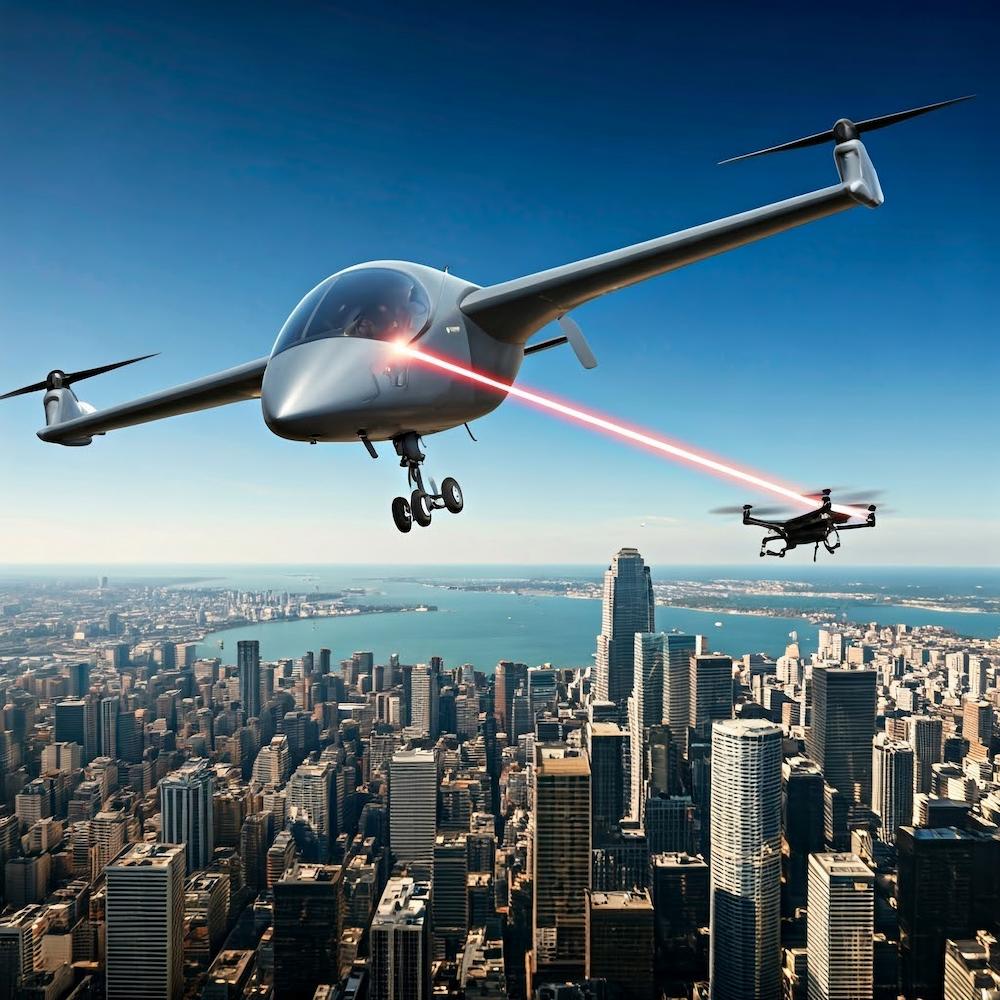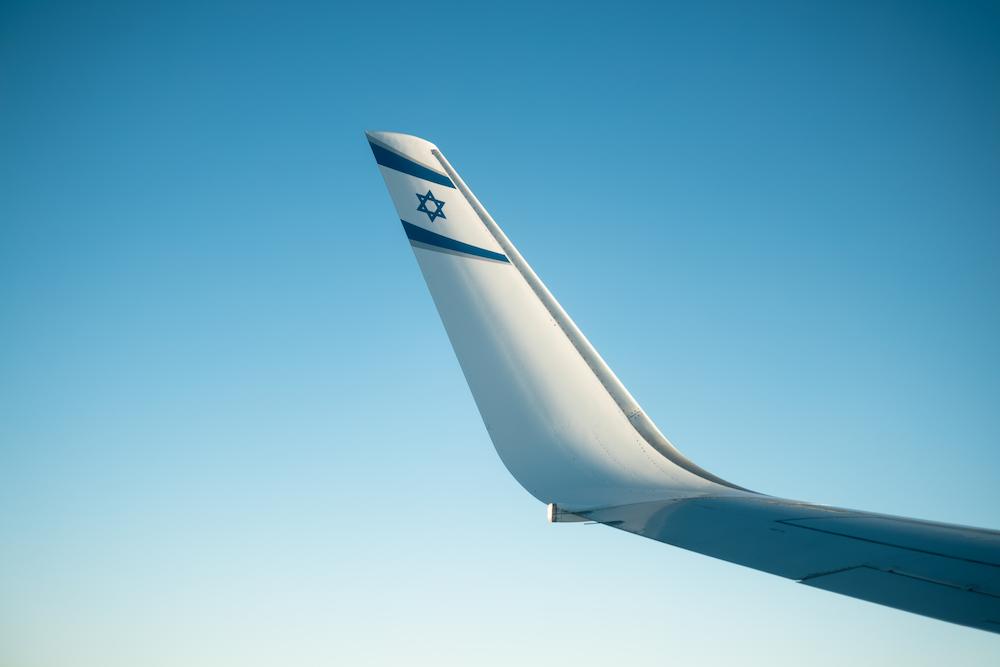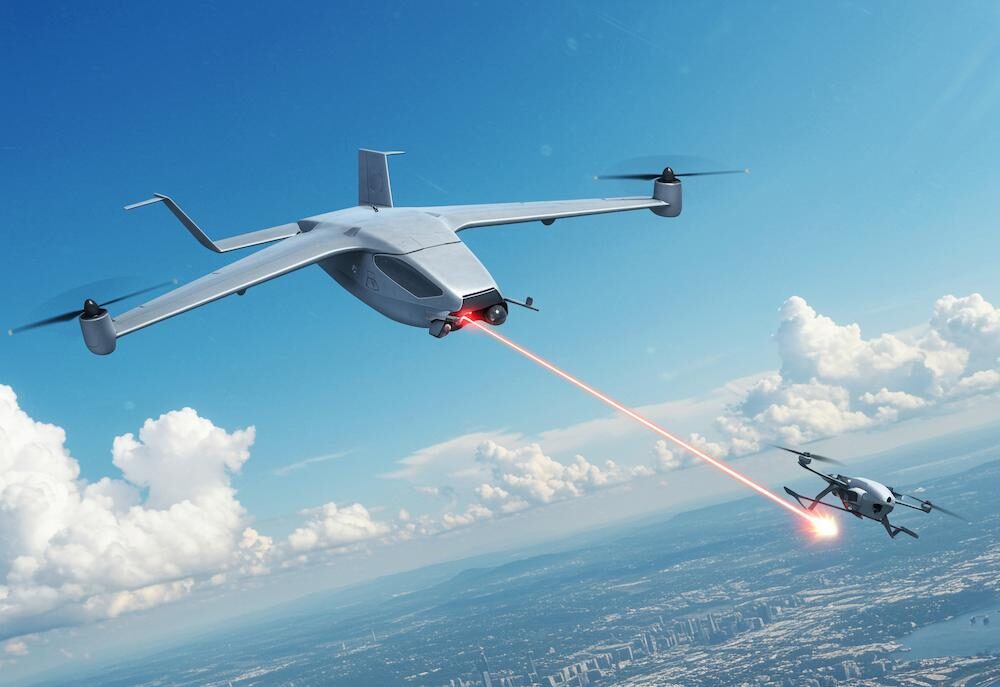As the Advanced Air Mobility (AAM) sector moves us toward a future filled with emerging aviation technologies, the conversation around security must become more focused. The advent of AAM, characterized by its use of highly automated aircraft with electric propulsion, vertical take off and landing capabilities and sustainable systems, has reshaped how we think about air transportation, mobility and logistics. However, with this new technology comes a pressing need to address potential vulnerabilities, particularly regarding threats posed by uncrewed aircraft vehicles (UAVs).
As we think about this pressing issue, Israel’s national airline EL AL, the World’s most secure airline, stands out as an exemplar to emulate. Their passenger jets are equipped with the C-Music Pod missile defense system. It has early detection that takes the pilot out of the loop in providing counter measures that include a laser generator that can lock onto, and destroy, an incoming missile (more on that below). The airline realized its need for this system more than twenty years ago, when in November 2002, an Israeli Arkia Boeing 757 had a narrow escape after terrorists with MANPADS in Kenya targeted it. Two missiles barely missed the plane which carried over 200 passengers. We will take a deeper look at this system in this OpED.
I believe it imperative that the U.S. AAM community considers employing the countermeasure of directed energy weapons (DEW) as a strategic design imperative to ensure the safety and reliability of AAM operations in our national airspace system (NAS).
Understanding AAM and Its Implications for Airspace Security
AAM represents a paradigm shift in air transportation. With the ability to connect urban centers and rural areas through efficient aerial logistics, this new system will utilize advanced technologies to transport people and goods seamlessly across the nation. The FAA’s recent ground-breaking regulations on powered-lift pilot certification signify progress in establishing a framework for AAM operations.
Yet, as we move forward, it is crucial to recognize that the influx and sheer volume of new aircraft influx of aircraft into our NAS will introduce novel security challenges. We should expect these new aviation entrants will attract malicious actors who seek to exploit them. Specifically, UAVs have great potential to disrupt AAM operations and raise significant concerns about airspace security.
The Evolving Threat Landscape: Risks Associated with UAVs
The integration of UAVs into daily life has also already shown us how quickly criminal tactics can adapt using UAVs. The concept of “porch pirates,” who steal packages left on doorsteps, could evolve as delivery drones become more commonplace. Imagine a scenario where individuals use drone-jamming devices to intercept packages mid-air or even deploy kamikaze drones as weapons against AAM vehicles. These types of threats are not merely hypothetical; they are already occurring in conflict zones around the world.
And it’s not just the criminal that we need to be concerned about. The careless and clueless can be just as dangerous. Here are three examples of actual UAV on crewed aircraft hits:
- On Thursday, January 9, 2025, a civilian drone collided with a Canadian “Super Scooper” aircraft fighting the Palisades Fire on, forcing it to be grounded. Not only did it cause considerable damage and put the pilot at risk, it also removed a valued asset from the fight to contain the wildfire. This incident highlights both a careless and criminal UAV operator, as temporary flight restrictions (TFRs) made flights in this area illegal.
- On September 21, 2017, a collision occurred east of Staten Island, New York when a DJI Phantom 4 drone and a U.S. Army UH-60 (“Black Hawk”) helicopter collided. This collision caused damage to the helicopter’s main rotor blade, window frame and transmission deck. The National Transportation Safety Board (“NTSB”) found that this was caused by the drone operator’s failure to see and avoid the helicopter and his lack of understanding of safe operating practices. This incident illustrates how much damage a clueless UAV operator can cause.
- On October 12, 2017 in Quebec City, Quebec, Canada, a drone collided with a Beech King Air A100 on final approach to Jean Lesage International Airport at an altitude of 1500 feet. This caused the crew to declare an emergency. Aircraft rescue and firefighting services were deployed. Luckily, the aircraft landed safely without significant damage. This one also represents what a clueless UAV operator can do.
As we consider the implications of AAM’s expansion, the industry must explore how these threats can be mitigated. The security measures we put in place today will determine whether AAM can thrive without falling victim to disruptive operations…or direct attacks.

The Kinetic Option
To address the emerging threats posed by UAVs, countermeasures must evolve at a pace that matches or exceeds the speed of AAM development. While electronic warfare (EW) remains a primary defense against UAVs, kinetic options continue to play a crucial role in counter-UAS (C-UAS) strategies. These physical intervention methods aim to disable or destroy incoming drones through direct impact or proximity effects. However, each kinetic approach comes with its own set of advantages and limitations.
Artillery and Missiles
Artillery systems and surface-to-air missiles offer long-range engagement capabilities against UAS threats. Systems like the HQ-17 surface-to-air missile and PGZ-95 self-propelled antiaircraft artillery provide a layered defense against various aerial targets. However, these solutions face significant challenges when confronting low-cost drone swarms:
- Cost Inefficiency: High-end air defense systems are often not economical against inexpensive drones. Air defense batteries could quickly deplete their missile stocks when targeting UAV swarms.
- Limited Effectiveness: Recent training exercises have shown that antiaircraft artillery may only be about 40% effective in shooting down UAVs.
- Collateral Damage Risk: In urban or sensitive environments, the use of explosive munitions carries a high risk of unintended damage to surrounding infrastructure and civilians.
Counter-Drone UAVs
Deploying drones to intercept enemy UAVs has emerged as an innovative kinetic solution. This approach includes:
- Kamikaze Drones: Purpose-built UAVs designed to ram into and destroy enemy drones.
- Net-Launching Drones: UAVs equipped with nets to capture and disable hostile drones.
- Aerial Net Interception Systems: Larger drones that deploy nets to ensnare multiple enemy UAS simultaneously.
While these methods offer precision and reduced collateral damage risk, they face challenges in addressing large swarms and may struggle with highly maneuverable targets.
High Rate of Fire Systems
Rapid-fire weapon systems represent a middle ground between long-range missiles and short-range drone interceptors. One example, the Phalanx CIWS (Close-In Weapon System), originally designed for naval defense against anti-ship missiles, has been adapted for land-based C-UAS operations. This system is capable of discharging 4,500 20mm rounds per minute and equipped with its own radar and fire control system for autonomous target acquisition and engagement. Its effective range is 1.5km, with a maximum firing range of 5.5km.
The M134D Minigun, an electrically-driven rotary machine gun, can fire up to 6,000 rounds per minute and be mounted on various platforms, including vehicles and aircraft.
Limitations of Kinetic C-UAS Measures
Despite their potential effectiveness, all kinetic C-UAS solutions face several common limitations.
Many kinetic systems struggle to engage multiple targets simultaneously, making them less effective against drone swarms. Operationally, weather conditions, obstacles, and the need for line-of-sight can also impact the system’s effectiveness.
Add cost to the list of limitations. The expense of ammunition and potential for rapid depletion of stores when facing numerous low-cost drones can make sustained defense economically challenging.
Perhaps most concerning, in the civilian context, would be the potential for collateral damage. The use of projectiles, especially in populated areas, carries inherent risks of unintended damage.
Non-Kinetic Countermeasures
Given the concerns that kinetic counter-measures raise, the need for effective, non-destructive countermeasures against potential threats is pressing. Among non-kinetic options, Directed Energy Weapons (DEW) stand out as a promising solution, with High Energy Lasers (HEL) at the forefront.
Radio Frequency (RF) Jammers
RF jammers represent the initial tier of non-kinetic countermeasures. These devices emit powerful RF signals to disrupt the communication links between hostile drones and their operators. By interfering with command and control signals, RF jammers can force unauthorized drones to land safely, cause them to return to their launch point and allow operators to take control and guide them to a secure location.
While effective against many consumer and commercial drones, RF jammers face limitations when confronting more sophisticated threats that may use encrypted or frequency-hopping communications.
High-Power Microwave (HPM) Devices
HPM systems take drone defense a step further by generating strong electromagnetic pulses (EMPs). These EMPs can disrupt or permanently damage the electronic systems of incoming threats; neutralize multiple targets simultaneously within their effective range; and operate in all weather conditions. However, HPM devices require careful deployment to avoid affecting friendly electronic systems in the vicinity.
High Energy Lasers (HEL)
HEL systems represent the most cutting edge of DEW technologies. They offer unparalleled precision and speed in neutralizing aerial threats. These systems work by generating a high-intensity beam of coherent light, focusing this beam on a specific point on the target drone and rapidly heating the target area to cause structural failure or disable critical components.
The advantages of HEL systems in AAM defense are significant:
- Pinpoint accuracy, minimizing collateral damage
- Near-instantaneous engagement of threats
- Low cost per engagement compared to traditional kinetic weapons
- Ability to target multiple threats in rapid succession
Recent advancements have addressed previous limitations such as power requirements and atmospheric interference.
All of the above kinetic and non-kinetic technologies have been successfully deployed in various military contexts and, as such, have proven their effectiveness against UAV threats. However, for AAM, DEW offers a promising solution to neutralize aerial threats without the collateral damage associated with traditional kinetic weapons.
HEL, This DEW Is Good
High Energy Lasers (HEL) are absolutely cutting-edge in the realm of DEW. As mentioned, the primary objective of HEL systems is to rapidly heat a specific portion of an incoming threat, or confuse its terminal guidance system by ‘blinding’ its sensor with a beam and thereby rendering it inoperable. This precision targeting allows for the neutralization of threats without the need for conventional explosives or projectiles.
Raytheon’s H4 system provides a practical example of this technology. Designed to counter complex threats like mortar rounds and drone swarms, the H4 can acquire, track and neutralize multiple targets simultaneously. While its effectiveness has been demonstrated in U.S. Air Force applications, the size and weight of its current iteration would not work for smaller vehicles.
However, for DEW solutions to be viable in civilian environments and relevant to applications like AAM, they must be miniaturized and integrated into aircraft without compromising performance.

Miniaturization: The Key to Effective Deployment
The successful deployment of DEW in AAM operations hinges on miniaturization. Once reduced in size, weight, and power (SWaP), equipment manufacturers can effectively integrate these systems into aircraft designs without significant flight degradation or time aloft.
As one example, the Israeli airline EL AL has already pioneered anti-missile systems for commercial aircraft. According to Shrad Ranabhat, writing for Airways Magazine, the relevant tech called “C-Music system” can be traced back to the Israeli Air Force’s tech called “Flight Guard.” Flight Guard was an advanced radar-based defense mechanism designed to identify and counter incoming missile threats. EL AL Airlines adopted and refined Flight Guard through numerous iterations to create the current C-Music platform.
Operating as an autonomous unit, the C-Music pod incorporates cutting-edge Infrared Passive Approach Warning System (PAWS) sensors, a product of Elbit Systems. This integrated system continuously scans the aircraft’s surroundings for potential hazards. The self-contained pod houses a comprehensive suite of components, including threat detection capabilities, data processing units, laser emission technology, beam guidance systems and thermal management solutions.
Upon detecting a missile threat, the PAWS immediately engages its tracking protocols. It then activates a Directional Infrared Countermeasures (DIRCM) system, which utilizes an advanced fiber laser emitter. This laser beam is precisely directed through a sophisticated mirror turret to effectively illuminate the incoming threat. By disrupting the missile’s guidance systems, the C-Music alters the projectile’s trajectory. It steers it away from the protected aircraft to ensure passenger safety.
The C-Music system demonstrates that military DEW tech can be adopted in the civilian aviation context to bolster safety. It utilizes infrared sensors and laser emitters to protect aircraft from heat-seeking missiles while maintaining minimal impact on performance. This type of technology could serve as a model to develop countermeasures tailored specifically for AAM vehicles.
Prioritizing Security in AAM Development
As AAM continues to expand its reach across urban landscapes and rural communities alike, we must remain vigilant about potential vulnerabilities. It is imperative that security considerations be woven into every aspect of development. Counter-UAS is at the top of mind for the folks in the National Security Agency (NSA), National Security Council (NSC), Department of Homeland Security (DHS) and other agencies who are integral to the safety of our NAS. Aviation-specific agencies such as the FAA and its parent the Department of Transportation (DOT) must prioritize the integration of these technologies into regulatory frameworks that support innovation while ensuring public safety.
This will be an uphill battle. Currently, regulations in place to protect all aircraft, including UAVs, from harm – such as 18 U.S.C. §32, makes it a felony to “damage, destroy, disable, or wreck any aircraft” – carry potential punishments up to twenty years in a federal prison. Legislative relief from this provision, such as previously provided to the U.S. military (10 U.S.C. §130i) and a few other federal agencies, will need to occur soon…hopefully before a nefarious UAV event occurs.
The pace to provide such legislative relief to state, local, tribal and territorial (SLTT) agencies, critical infrastructure owners and the FAA must accelerate. After New Jersey’s “Dronegate,” people seem to realize that UAV countermeasures to protect people and critical infrastructure on terra firma will also be needed throughout the homeland. It stands to reason that airborne threats don’t just jeopardize assets on the ground. We will need something to protect the craft in the air, including AAM. Collaboration between industry leaders and government entities will be crucial to develop effective strategies that keep pace with evolving threats. The introduction of DEW as a countermeasure against UAV threats is not merely an option in my opinion; it is a necessity to safeguard our skies.

